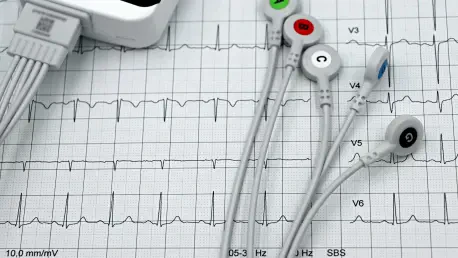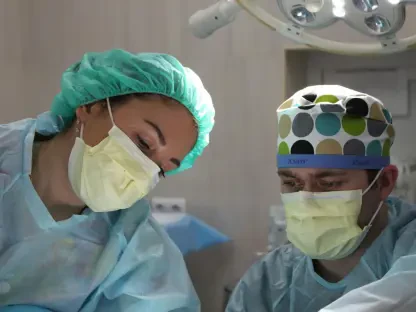In an era where technological advancements shape daily routines, the widespread use of artificial light during nighttime has become ubiquitous. However, recent research has revealed that these seemingly harmless light sources might have profound effects on heart health. This research explores how exposure to night light might disrupt the circadian rhythms that are vital for maintaining the body’s internal clock, subsequently affecting cardiovascular functions. Findings from an international study spearheaded by researchers from the Flinders Health and Medical Research Institute, in collaboration with colleagues from the UK and U.S., bring this underexplored health threat to light. By delving into this intricate relationship, the study unveils concerning insights about nocturnal artificial light and cardiovascular disease risks that necessitate immediate attention.
Circadian Rhythm Disruption and Its Cardiovascular Implications
Exploring Circadian Rhythms and Cardiovascular Health
The human body operates on a biological rhythm known as the circadian rhythm, which regulates sleep-wake cycles and governs various physiological functions. This internal clock plays a critical role in aligning bodily processes with day and night, affecting cardiovascular dynamics such as blood pressure, heart rate, and glucose metabolism. When these rhythms are consistently disrupted, severe cardiovascular outcomes have been noted. Studies involving both animals and humans highlight adverse effects such as increased incidences of myocardial fibrosis, hypertension, inflammation, and impaired autonomic balance. Disruption of circadian rhythms can originate from prolonged exposure to night light, leading to disturbances in hormone levels and platelet activation.
The importance of maintaining a balanced circadian rhythm cannot be overstated as it contributes to optimal metabolic and cardiovascular functions. Disruptions can induce systemic changes manifesting in various cardiovascular disorders. Researchers have posited that misalignment due to artificial light exacerbates the risk of conditions like coronary artery disease and myocardial infarction, urging a reevaluation of nightly light exposure routines. These findings underscore the complex biological mechanisms by which disrupted sleep patterns can deteriorate cardiovascular health, warranting a closer examination of artificial light’s role in such perturbations.
Understanding the Extent of Circadian Misalignment
Recognizing the widespread implications of circadian misalignment is essential when evaluating the impact on heart health. The comprehensive study analyzed data from 88,905 UK Biobank participants who used wrist-based light sensors, tracking nocturnal light exposure. This extensive dataset provided insights into light exposure’s correlation with cardiovascular incidents. The research used hazard modeling to explore associations between varying light exposure levels and cardiovascular disease diagnoses, adjusting for numerous confounders like age, lifestyle behaviors, and genetic predispositions.
The results supported a dose-response relationship between night light exposure and cardiovascular disease risk, revealing that those experiencing higher light levels had increased hazards for conditions like coronary artery disease and stroke. These associations persisted after adjusting for diverse factors, emphasizing the robustness of the findings. Notably, variations in cardiovascular outcomes were apparent across demographics, with different implications for age and gender. Younger populations and women displayed distinct vulnerabilities, suggesting specific preventive measures for these groups might be required.
Implications for Public Health Strategies
Tailored Interventions for At-Risk Populations
The study’s findings indicate that not all demographics experience the same risk level from circadian disruptions caused by artificial light. Women showed stronger associations with heart failure and coronary artery disease, while younger individuals were more susceptible to heart failure and atrial fibrillation. These demographic insights are crucial for developing targeted interventions and awareness campaigns. Tailored strategies can better address population-specific vulnerabilities, fostering more effective prevention and management of cardiovascular risks linked to night light exposure.
Public health policies should incorporate recommendations to mitigate light exposure during nocturnal hours, especially for at-risk populations. By addressing gender and age-specific susceptibilities, health interventions can significantly reduce the public health burden associated with circadian disruption. Educating communities on the potential hazards of night light exposure and advocating for lifestyle adjustments can significantly enhance heart health outcomes. The development of circadian-aligned environmental and personal practices, such as light exposure management, is vital in this context, offering tangible benefits for cardiovascular well-being.
Steps Toward Minimizing Night Light Exposure
Reducing artificial light exposure at night serves as a practical preventative measure that aligns with established cardiovascular prevention strategies. In response to the highlighted risks, researchers advocate for minimizing exposure to bright lights during habitual sleep hours. Incorporating this change into daily routines can help restore natural light-dark cycles essential for maintaining circadian rhythm integrity. Suggestions also include implementing circadian-informed lighting across homes, healthcare facilities, and urban spaces, aiming to reduce circadian misalignment and support cardiovascular health.
These measures reflect a proactive approach that complements broader cardiovascular health initiatives. Encouraging the integration of natural light patterns into everyday life can help individuals maintain healthier circadian rhythms, thereby reducing cardiovascular risks. As evidence increasingly supports the adverse effects of artificial light on heart health, such action not only enhances individual well-being but also presents wider societal benefits. By prioritizing circadian-aligned practices, individuals and policymakers together can foster healthier living environments with reduced exposure to artificial light, ultimately bolstering public heart health.
Moving Forward: Addressing Night Light Exposure in Health Recommendations
The human body functions according to the circadian rhythm, an internal clock regulating sleep and wake patterns and other physiological functions. This rhythm is crucial in synchronizing bodily processes with the day-night cycle, impacting cardiovascular functions like blood pressure, heart rate, and glucose metabolism. When disrupted, serious cardiovascular issues often arise. Research in both human and animal studies indicates adverse consequences, including increased risks of myocardial fibrosis, high blood pressure, inflammation, and impaired autonomic balance. Nighttime light exposure is a common disruption, affecting hormone levels and platelet activation. Maintaining a stable circadian rhythm is vital for optimal metabolic and cardiovascular health. When misaligned due to factors like artificial lighting, the risk for conditions such as coronary artery disease and heart attacks rises. This highlights the necessity to reconsider nighttime light exposure as disrupted sleep patterns can significantly harm cardiovascular health, indicating the need to assess how artificial light impacts these rhythms.









